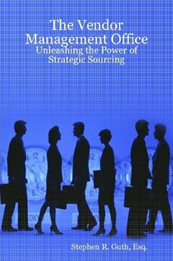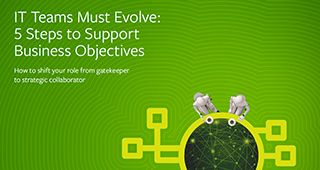The vendor management office (VMO) is a business unit within many enterprises that is responsible for evaluating suppliers of goods and services, and overseeing regular interaction and long-term relationships with vendors. Sometimes there is a separate IT-specific VMO setup specifically to monitor IT vendor relationships and help the organization follow stated policies and achieve goals related to workforce mix, expenses and risk management.
Vendor management requires inputs from legal, procurement, IT, and business units. The practice can help to lower costs, reduce duplication of tools and services, and strengthen relationships with core vendors.
The VMO becomes increasingly important and useful as an organization expands. According to Forrester research, VMOs are found in 39% of companies with at least 1000 employees and around 50% of companies with at least 5000 employees.
What is Vendor Management?
According to Gartner, vendor management helps organizations “control costs, drive service excellence and mitigate risks”, all in pursuit of increasing value and return on investment.
A vendor – or supplier, or seller – is an organization that contributes goods or services to another organization within a supply chain. A typical supply chain vendor manufactures or purchases inventory of items, then sells them to the next step in the supply chain.
Vendor Management tools are often a feature of Enterprise Resource Planning software.
Benefits of a Vendor Management Office
The benefits of a successful VMO are numerous. WGroup, a management consulting firm with deep experience in IT optimization, rightfully notes that revenue enhancement is the #1 objective a VMO. But that is just the start. Chuck Crafton of the Project Management Experts group, has identified these critical benefits – among many others – that should result from implementing a VMO:
- Improved supplier relationships (coordination, collaboration, and communication)
- Centralized procurement & contract management
- Improved governance, resulting in consistency and compliance
- Dispute & issue resolution management
- Vendor risk identification, assessment and mitigation management
Gauging the Success of a Vendor Management Office
CIOs and other professionals responsible for ensuring the VMO is producing value should consider the following activities to guide their approach:
- VMO should provide guidance during RFP creation – the VMO should provide templates and best practices across business units for RFP processes.
- Develop more structured approach to negotiations – the VMO should formalize the negation processes and leverage performance metrics for renegotiations.
- Help put better contracts in place – the VMO should be a critical stakeholder in the review and management of contracts, and work on systematically improving contracts over time.
- Regularly evaluate relationship and performance management – business managers should see higher quality and lower costs from suppliers as a result of VMO’s work.
- Solicit feedback on VMO performance – a best practice for a VMO is to seek feedback from stakeholders regularly after sourcing events to track on internal satisfaction with the process.
7 Essential Elements of Vendor Management
In this video from the IT Metrics & Productivity Institute, the following 7 essential elements of vendor management are explained:
- Strategic View of Procurement
- Vendor Management Strategy
- Role of the Vendor Manager
- Vendor Business Plan
- Shared Performance Metrics
- Critical Success Factors
- Core Competencies
Learn More About Vendor Management

Perhaps the best book on the subject of a VMO is The Vendor Management Office: Unleashing the Power of Strategic Sourcing by Stephen Guth.
In this book, Guth pulls the curtain back and reveals the VMO philosophy that has powered success for some of the largest organizations around the world. Perhaps the most critical point in the book is that cost is not always a factor or the most critical factor when developing a VMO strategy.
Guth brings his knowledge as a legal and contracts professional with extensive experience in procurement, negotiation, contracting, supply management, and vendor management, having implemented such processes for companies including Ryder System, Dell Computer, and Aflac Insurance.
For additional best practices, be sure to watch this presentation from Forrester on “Building an Effective Vendor Management Organization (VMO)”:
Discovery is Critical to Vendor Management
When setting up a VMO and IT vendor management practice, one of the first steps should be to use a tool like BMC Helix Discovery to identify all servers, assets, applications, and services – and their relationships with one another. Discovery offers an always-on single trusted source of information, and can help alert the VMO to new applications and vendors that have not been properly vetted. Learn more about how Discovery can model all your asset dependencies in minutes.







